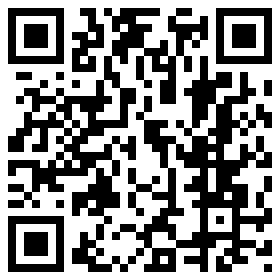Written by:
Howard Fenton
Senior Technology Consultant
NAPL
Did you read the latest market research about QR Code use? According to a study by comScore, in June 2011, 14 million mobile users scanned QR codes. This represents 6.2 percent of the total mobile audience. The study also looked at demographics and found that the users were more likely to be male (60% of code scanning audience), skewed toward ages 18-34 (53%) and have a household income of $100,000 or above (36%). But as someone who has been scanning QR codes pretty regularly, I am still shocked at the problems I have experienced. So here are a few common mistakes.

1. Test, test, test the readability – Before I upgraded to an iPhone, I struggled with my Blackberry. So first, you test QR codes thoroughly. To ensure they work, just get a bunch of different smart phones and test your QR codes at the right distance from the code and make sure they work on a variety of devices. Many times it is just not large enough when viewed from the vantage point of the user.
2. Curb your creativity – While nobody says the look of a QR code will make you admire the design, putting crazy pictures or text within the code or making it difficult to find like a “where’s Waldo” book is just a bad idea.
3. Test your action – QR codes initiate actions such as driving you to a web page, or installing information into contacts, or mapping out a path. You should test these actions over cell phone networks and not Wi-Fi networks and make sure it points to an optimized mobile site and not to a standard desktop web page.
4. Test for signal across different networks – If you print a QR code on a poster, you should test the signal strength at the locations you are going to use with all the major carriers before you post it.
5. Smart placement – When you put QR codes on posters it should be easily visible and easy to capture. I am not sure how effective QR codes are on billboards on the interstate highways, TV ads, underground subways or on cabs or buses.
6. Motivate a call to action – Taking out your smart phone, finding the app, and snapping the shutter requires work. Therefore, to be successful you need to motivate the action. There are some best practices such as: special offers or discounts, free downloads of apps, access to exclusive content, exclusive video access, and time-sensitive promotions.
7. Track usage – This is the best way to articulate the value.
These are just a few things to keep in mind in order to be successful in the world of QR Codes.
What are your thoughts on QR Codes? Do you use them personally? In your business? How do you think companies can be more successful with QR Codes?
Interested in more topics similar to QR Codes? You may also like:
- Connecting Print to the Digital World One Scan at a Time
- Are Online Ads Less Effective Than TV and Print Ads?
- When it comes to Direct Marketing Campaigns: Practice what you Preach
- 80s Music and the QR Code
——-
Howard Fenton is a Senior Technology Consultant at NAPL. Howie advises commercial printers, in-plants, and manufacturers on workflow management, operations, digital services, and customer research. He is a paid contributor to this blog.



Our research shows the greater majority of Australians still have no idea what a Qr Code is
Therefore our code, (which directs people to a mobile optimized sight) has a wide border, text within the border explains what it is and how to open it.
Above the code the text reads. ‘Great Value deals for Home Owners’
Beneath the code reads.
‘Great deals revealed by scanning image with a free qr code reader on your smartphone’
Wish me luck, we go into print first week of March 2012.
A few years back my team and I started including QR codes in most if not all our design concepts that were print media based. The incorporation of the QR code into the design is not a challenge. The real work is done ahead of the developing of the QR Code. You have to have a solid online plan to go alone with the QR code. Having a code that directs a smartphone user or tablet user to a business owners home page will not due for today’s savvy user. The step beyond requires careful consideration on the web design front of things as well as some savvy marketing approaches. So carefully think through your web site support approach before implementing QR codes into offline designs.